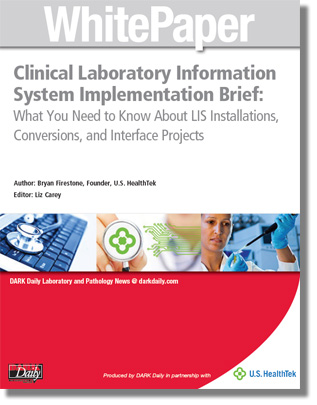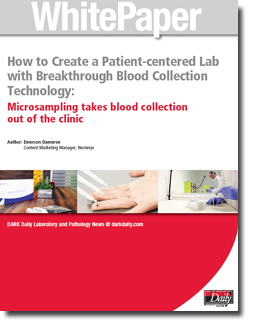
Anatomic Pathology at the Tipping Point? The Economic Case for Adopting Digital Technology and AI Applications Now
 Anatomic pathology laboratories are struggling to remain profitable as they grapple with increasing workloads amid sweeping reimbursement cuts. The traditional pathology business model hangs in the balance, with some labs operating at such a thin margin that it may only take one severe adverse event to put them out of business.
Anatomic pathology laboratories are struggling to remain profitable as they grapple with increasing workloads amid sweeping reimbursement cuts. The traditional pathology business model hangs in the balance, with some labs operating at such a thin margin that it may only take one severe adverse event to put them out of business.
Digital pathology is one wide-ranging solution that’s tackling these systemic challenges. Driven by recent technological and regulatory approvals, leading academic and commercial laboratories are increasingly going digital to overcome significant gaps in efficiency and diagnostic accuracy. These same labs are implementing computational applications that leverage artificial intelligence (AI) to expand on the productivity, quality, and confidence gains they’ve already realized.
As a laboratory professional, you may recognize that the time to go digital is now. DARK Daily is pleased to offer this FREE white paper — “Anatomic Pathology at the Tipping Point? The Economic Case for Adopting Digital Technology and AI Applications Now” — that provides evidence to justify your decision to go digital, as well as key insights and best practices that can help your lab make the shift successfully.
Download the White Paper now to get a synopsis of recent research and real-world cases that demonstrate the economic and scientific necessity of adopting digital pathology platforms and AI applications. Gather perspective from in-depth interviews with industry-leading labs that lay out the benefits they themselves gained from going digital.
This White Paper includes all this, and much more:
- Learn detailed examples of how AI-enabled digital pathology drives diagnostic confidence, increased productivity, and cost savings
- Benefit from insights and best practices shared by digital pathology pioneers including Zoltan Laszik, MD, PhD, Professor of Clinical Pathology, UCSF; Nicolas Cacciabeve, MD, Managing Partner, Advanced Pathology Associates; Kiran Motaparthi, MD, Program Director, Department of Dermatology, University of Florida; and Anthony Magliocco, MD, President and CEO, Protean BioDiagnostics
- Enhance your perspective on how AI-powered digital pathology systems will drive the future of diagnostics and empower precision medicine
- Get key takeaways from leading-institution case studies including University of Florida, University of California, San Francisco (UCSF), Memorial Sloan Kettering Cancer Center, and Granada University Hospitals
White Paper Table of Contents
INTRODUCTION
Chapter 1: Digital Pathology Pioneers Prove Its Success and Long-Term Viability
Chapter 2: How AI Applications are Already Revolutionizing Cancer Diagnostics and Research Today
Chapter 3: Digital Pathology and AI in Practice: What’s Next?
CONCLUSION
Get the facts your laboratory needs when considering digital pathology, and how it’s possible to join other laboratories that are realizing 13 to 21% efficiency and productivity gains since adopting this technology.
Learn more by downloading your FREE copy of “Anatomic Pathology at the Tipping Point? The Economic Case for Adopting Digital Technology and AI Applications Now” now.
Produced in partnership with:
![]()
Download the White Paper now by completing the form below.
Access to some white papers may require registration. In exchange for providing this free content, we may share your information with the companies whose content you choose to view. By accessing the white paper, you’re agreeing to our Terms of Service and Privacy Policy.








 A recent LIS market report shows that demand for a modern LIS is driven by a number of factors: acceleration of laboratory automation, the need for improved lab efficiency, advances in integrated functionality, importance of compliance with regulatory requirements, and the rising prevalence of chronic diseases.
A recent LIS market report shows that demand for a modern LIS is driven by a number of factors: acceleration of laboratory automation, the need for improved lab efficiency, advances in integrated functionality, importance of compliance with regulatory requirements, and the rising prevalence of chronic diseases.



